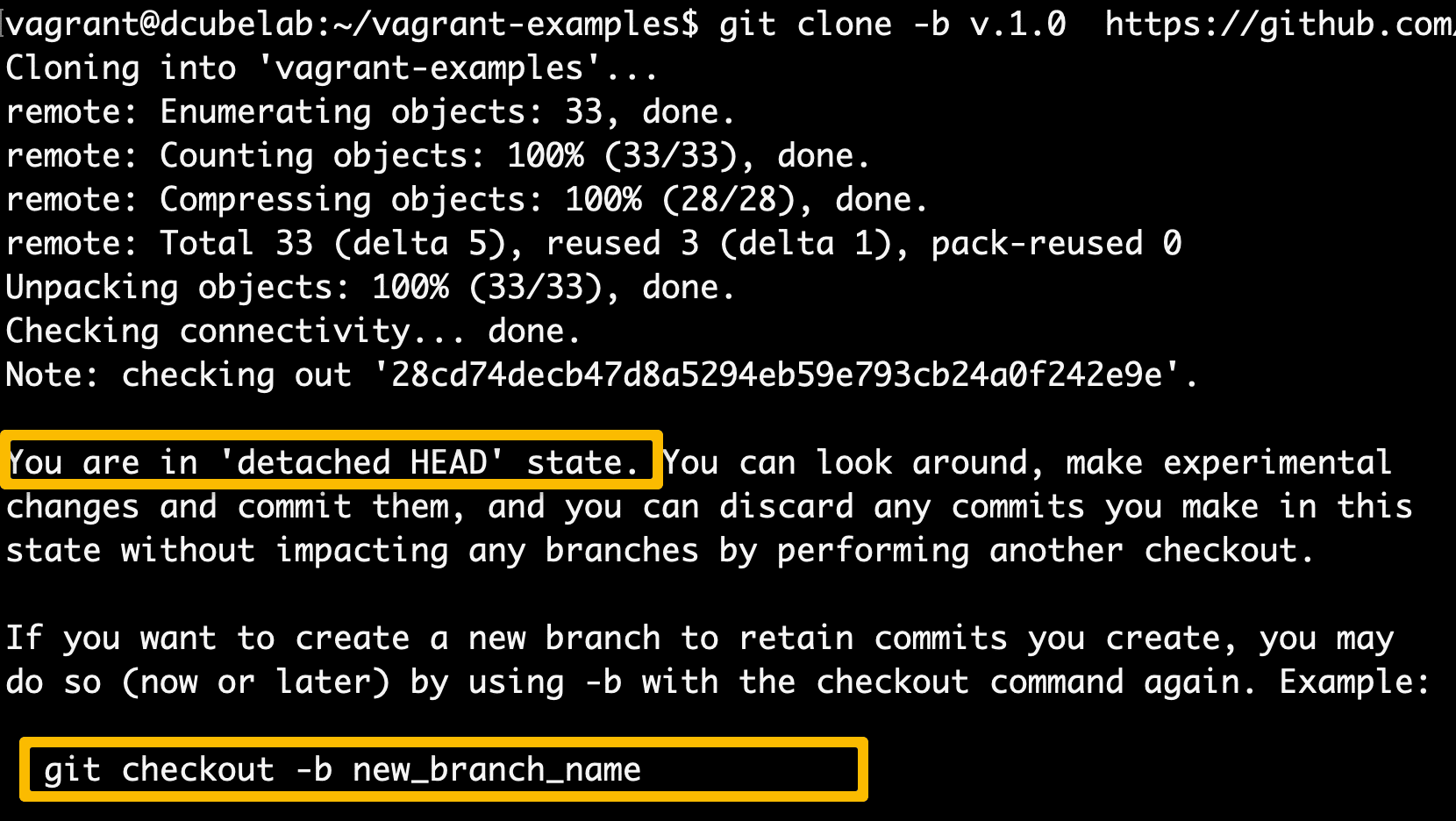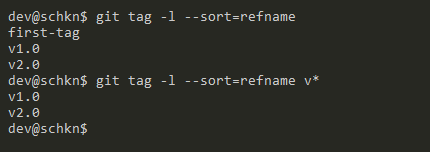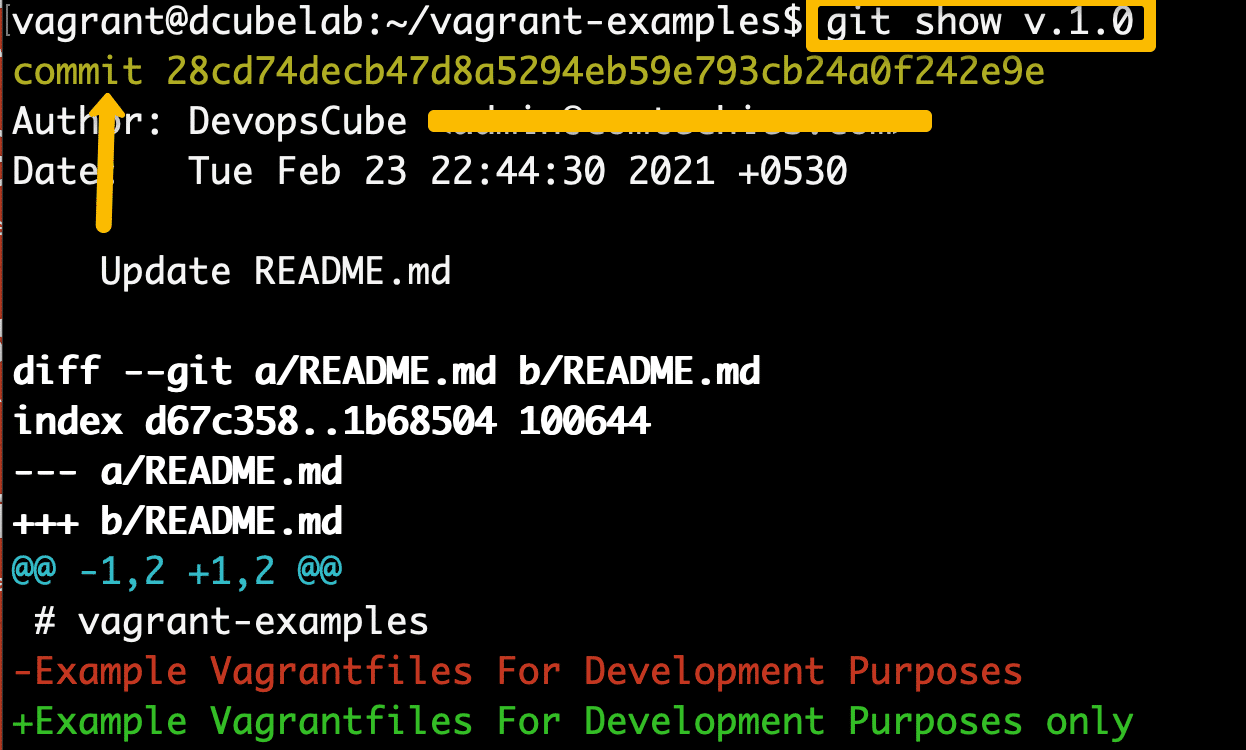Git Describe Not Using Latest Tag
It is required to explicitly define that the tags should be pushed to. Now we can take this command an execute it in our git log command by simply replacing the hard coded tag as follows.

Finding Git Tags With The Git Describe Command Stefan Judis Web Development
Get the most recent git tag of your repository using git-describe1.

. This is useful in an environment where people may use different SCMs. When pushing to a remote repository tags are NOT included by default. If you reformulate your question a bit it will probably be more answerable.
The checkout action does not fetch any tags resulting in git describe failing. Torvaldsg5 git git describe v104 v104 With --all the command can use branch heads as references so the output shows the reference path as well. Found a better way to do it git describe and --abbrev0 argument.
Use dependabot to update patchelf upstream mayeutpatchelf-pypi2. You have successfully checkout the latest Git tag. But it seems to me that the latest tag should be at least v0214.
One common pattern for automated releases I have seen and used relies on Git tags as the catalyst for a release process. Like most VCSs Git has the ability to tag specific points in a repositorys history as being important. For my needs I want to tag to be the latest version from the CHANGELOGmdI decided to use the pwsh task because I am using Microsoft hosted agents and PowerShell Core is available by default on both Linux and Windows agents.
Doing a git describe on a tag-name will just show the tag name. Lets call the current version of the hello program version 1 v1. I thought maybe it was macOS specific however I tried on Ubuntu with the same result.
Automatic updates of dependencies assimpassimp4114. It shows instead the best tag as defined by the heuristics. Torvaldsg5 git git describe v104 v104.
I am trying to create an git version of the ArchLinux OpenBLAS package and the standard way of getting the version number is to execute the following. Building VUnits verification components and OSVVMLibraries at the same time VUnitvunit767. Lets tag the version prior to the current version with the name v1-beta.
Get the most recent git tag of your repository using git-describe1 - GitHub - stevemaogit-latest-tag. The g prefix stands for git and is used to allow describing the version of a software depending on the SCM the software is managed with. But sometimes the best is the latest.
Git describe now uses --always so if there are not tags it returns a hash instead of failing Thanks to e-e-e In my experience to display the tag you had to add the --tags after --always in order to show the current tag youre on. Mayeut mentioned this issue 16 days ago. You should probably address MikkoRantalainens comment here as well I suspect these are all branch names but its.
If you have the new version. When using tags in Jenkins Pipeline. Push Tag to Remote.
Git describe --tags. Torvaldsg5 git git describe --all --abbrev4 v105. Then we will fetch the recent tag that is accessible with the command git describe as mentioned below.
Currently it gives the following. Fetch tags after checkout. For more information on Git tags see 26 Git Basics - Tagging from the Pro Git book.
The difference is that git will take the latest tag for this branch not for all branches. Git tag -d X git fetch origin tag X to get my updated tag. Taggit describe --tags git rev-list --tags --max-count1 echo tag v20 Finally we will proceed to checkout using the git checkout command.
Typically people use this functionality to mark release points v10 v20 and so onIn this section youll learn how to list existing tags how to create and delete tags and what the different types of tags are. Git checkout tag -b latest Switched to a new branch latest Thats it. Afterwards Ill go back to the master branch and start over with my workflow.
Umarcor mentioned this issue on Oct 26. Taggit describe --tags git rev-list --tags --max-count1 echo tag v20. I recently discovered a package that automatically sets the upcoming version of my package based on the latest tag.
Doing a git describe on a tag-name will just show the tag name. In a sense git describe never shows the latest tag. So with the command from above we can simply get the latest tag.
The recommended solution git fetch --prune --unshallow --tags of actionscheckout206 has the drawback that a full clone gets created defeating the optimization attempts of the action. I create a tag on the release branch. To create a new tag execute the following command.
Replace tagname with a semantic identifier to the state of the repo at the time the tag is being created. Git describe --tags Git Push Tag. Git supports two different types of tags annotated and lightweight tags.
Environget GIT_DESCRIBE_TAG default Therefore I think the former is preferred. Then retrieve the latest tag available by using the git describe command. Git checkout tag -b latest.
This is useful in an environment where people may use different SCMs. Git describe --dirty --tags --long --match to find the previous tag. Now the current version of the page is referred to as v1.
02 Tags for previous versions. You can test which tag you have by doing git rev-parse X which should return 0123456789abcdef. Git log git describe --tags --abbrev0HEAD --prettyformats grep -i -E INTERNALFEATUREFIXDOCFEATURE 11.
01 Creating a tag for the first version Run. If you got the wrong tag and want the new one please delete the old one and fetch the new one by doing. Git describe --abbrev0 git describe --abbrev0 --match RC.
The git tag command creates a local tag with the current state of the branch. The immutable nature of releases and the immutable nature of tags can definitely go hand in hand but up until few months ago Jenkins Pipeline was not able to trigger effectively off of. A common pattern is to use version numbers like git tag v14.
We are ready to code away. You can create annotated tags using the web portal and starting with Visual Studio 2017 Update 6 you can create both lightweight and annotated tags from within Visual Studio. I am making the assumption for my.
To learn how to tag commits for future references. But the following syntax will not result in any explicit errors because it ensures that GIT_DESCRIBE_TAG is always defined with a default value if necessary. Finally use the git checkout command to checkout the latest git tag of your repository.
Once weve set both of these permissions.

How To Get The List Of Merged Branches After A Specific Git Tag Stack Overflow

Git Describe Abbrev 0 Shows Wrong Tag Issue 272 Actions Checkout Github

How To List Git Tags Devconnected

How To Checkout Git Tags Clone A Tag Beginners Guide

Getting Latest Tag On Git Repository Github
Git Describe Or Git Describe Tags Do Not Give The Correct Version Issue 1315 Kubernetes Client Python Github

Git Describe Abbrev 0 Shows Wrong Tag Issue 272 Actions Checkout Github
Github Tvdstaaij Node Git Describe Git Describe Information At Runtime With Semver Support

Git Describe Fails With Fatal No Names Found Cannot Describe Anything Stack Overflow

How To Use Git To Manage Firmware Versions Atadiat

How To Find Nearest Tag Ahead Of Commit In Git Stack Overflow
Github Erasys Git Describe Remote Caches Repositories Locally To Efficiently Do Git Describe On Remotes

How To Checkout Git Tags Clone A Tag Beginners Guide

How To List Git Tags Devconnected

Meta Tags Preview Edit And Generate Foundation Online Blog Social Media Social Sites




Comments
Post a Comment